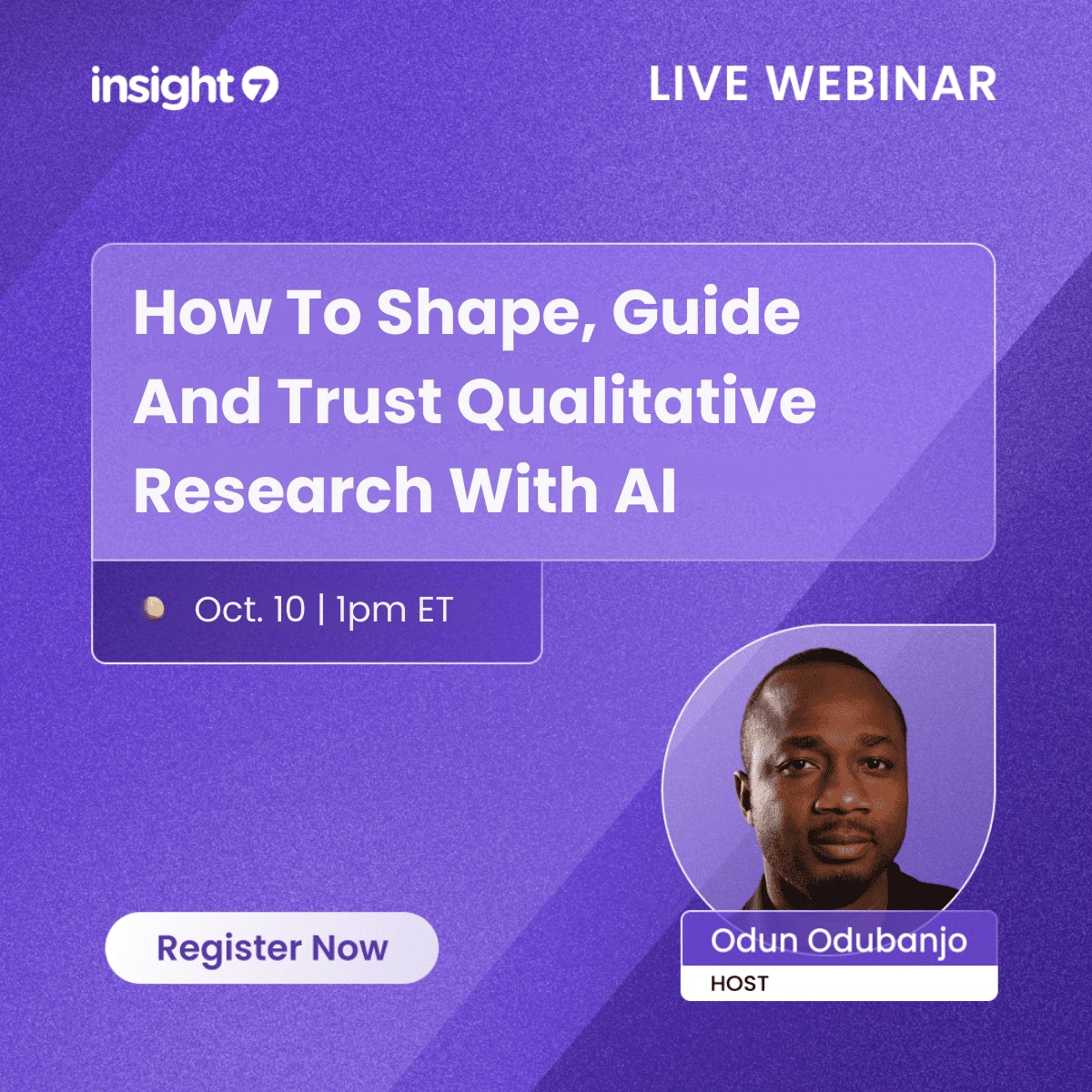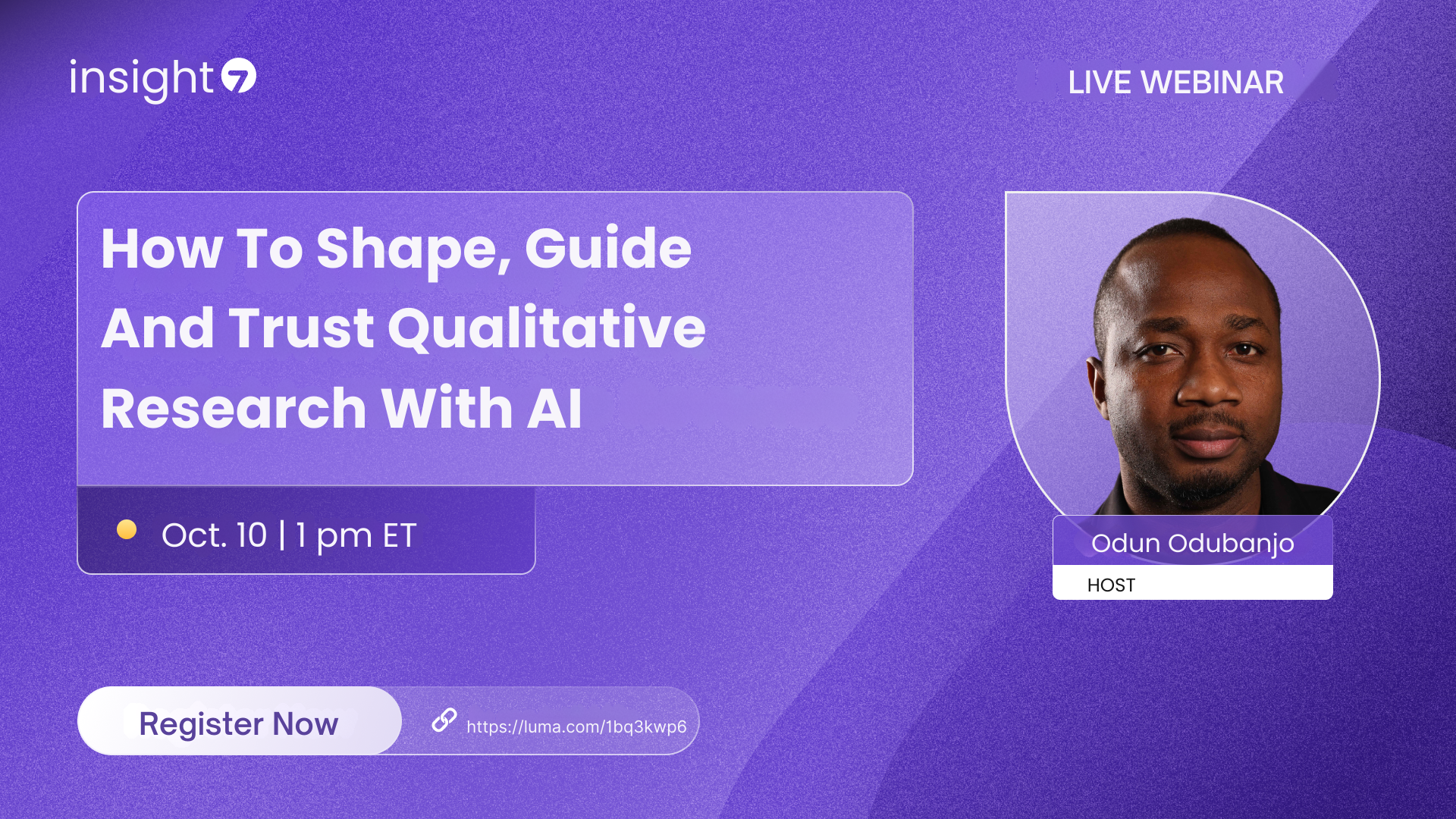Best AI Tools for Analyzing Stakeholder Feedback
-
Bella Williams
- 10 min read
In modern business environments, feedback serves as a crucial touchpoint for understanding stakeholder sentiments. Understanding how to analyze and interpret this feedback through various methods, particularly AI Feedback Analysis, can dramatically improve engagement strategies. With AI's capabilities, organizations can swiftly process large volumes of data, identifying trends and extracting meaningful insights.
AI Feedback Analysis encompasses many techniques, from sentiment analysis to keyword recognition. Businesses can utilize tools that categorize feedback into positive, negative, or neutral comments, providing a clearer picture of stakeholder opinions. For example, implementing such AI-powered systems can enhance decision-making processes by delivering actionable insights that resonate with stakeholders' needs. By unlocking these valuable insights, companies can adapt their strategies, ensuring they remain relevant and responsive to their audience.
Introduction to AI Feedback Analysis
AI Feedback Analysis plays a crucial role in deciphering stakeholder insights and enhancing decision-making processes. As businesses grapple with increasing volumes of feedback, the ability to analyze this data effectively can drive valuable outcomes. Stakeholders expect timely and relevant responses, making it essential for organizations to harness AI tools to sift through complexities and identify trends.
By employing AI Feedback Analysis, organizations can transform raw data into actionable insights. This process not only streamlines the review of customer opinions but also uncovers patterns that might have gone unnoticed. Ultimately, these insights empower businesses to make informed decisions, fostering stronger relationships with stakeholders and paving the way for continuous improvement.
Analyze & Evaluate Calls. At Scale.

Understanding the Importance of AI in Feedback Analysis
Artificial intelligence (AI) has become essential for effective feedback analysis, significantly enhancing stakeholder engagement. AI feedback analysis allows organizations to process large volumes of feedback quickly and accurately, uncovering actionable insights that may have otherwise gone unnoticed. By implementing AI, organizations can identify trends, sentiment, and patterns present in stakeholder communications, ultimately guiding strategy and decision-making.
The importance of AI in feedback analysis extends beyond mere data processing. It fosters deeper connections with stakeholders by making their voices heard and informing product development or service enhancements. Furthermore, AI tools can streamline the feedback collection process, enabling teams to focus on responding to needs instead of compiling data. This balance of efficiency and effectiveness underscores the vital role AI plays in modern feedback analysis, paving the way for organizations to thrive in an increasingly competitive landscape.
How AI Feedback Analysis Transforms Stakeholder Engagement
AI Feedback Analysis fundamentally changes how organizations engage with their stakeholders. By automating the assessment of feedback, AI tools can quickly identify trends and sentiments within large volumes of data. This enables organizations to respond proactively rather than reactively, ensuring they prioritize stakeholder needs effectively.
Through AI-powered insights, organizations can cultivate deeper relationships with stakeholders. Firstly, these tools deliver actionable insights that guide strategic decisions, allowing for tailored communication and engagement strategies. Secondly, efficient analysis saves time and resources, allowing teams to focus more on relationship-building activities. Lastly, real-time feedback processing ensures that stakeholder voices are consistently heard, allowing organizations to adapt swiftly to changes in sentiment or demand. This transformation in engagement largely enhances trust and satisfaction, fostering long-term loyalty and collaboration.
Key Benefits of Implementing AI Feedback Analysis
Implementing AI feedback analysis offers numerous advantages for organizations seeking to enhance stakeholder engagement. Firstly, it allows for the efficient processing of large volumes of feedback, enabling insights to be extracted quickly. This rapid analysis not only saves time but also informs decision-making more effectively, allowing businesses to respond promptly to stakeholder needs.
Additionally, AI feedback analysis enhances accuracy by minimizing human biases often present in data interpretation. By utilizing advanced algorithms, organizations can identify patterns and trends that may go unnoticed through traditional methods. This leads to more reliable insights, guiding strategies that are closely aligned with stakeholder expectations. Ultimately, the integration of AI in feedback analysis fosters a more proactive approach, ensuring that organizations remain adaptable and responsive in an ever-changing environment.
Top AI Tools for Feedback Analysis
In exploring the top AI tools for feedback analysis, it's essential to recognize how these technologies elevate stakeholder insights and improve engagement strategies. AI feedback analysis leverages machine learning and natural language processing to sift through qualitative and quantitative feedback. This process provides organizations with a deeper understanding of customer sentiments and preferences, allowing them to adapt their products and services more effectively.
Several notable tools stand out in this domain. For instance, Insight7 enables users to unlock rich stakeholder insights through advanced analytics and visualization features. Similarly, MonkeyLearn offers a comprehensive text analysis platform that can categorize and interpret vast amounts of feedback efficiently. Qualtrics stands out for its experience management capabilities, combining feedback solutions with customer experience tools. RapidMiner provides robust data processing capabilities tailored for advanced analytics, while HubSpot integrates feedback collection into its CRM ecosystem. Finally, TextRazor simplifies natural language processing, making it accessible for teams to derive meaning from customer interactions. Each of these tools plays a significant role in enhancing AI feedback analysis, enabling organizations to make informed decisions.
Insight7: Unlocking Rich Stakeholder Insights
Unlocking rich stakeholder insights is pivotal for organizations aiming to drive strategic improvements. By applying AI feedback analysis, businesses can sift through vast amounts of feedback effortlessly. This technology helps identify key themes, sentiments, and actionable insights buried within qualitative stakeholder inputs. Consequently, organizations can tailor their strategies more effectively to meet stakeholder needs.
To unlock these insights, there are several fundamental approaches. First, data integration is crucial, allowing the aggregation of diverse stakeholder feedback from various sources. Second, natural language processing tools can dissect emotions and sentiments, revealing deeper layers of stakeholder sentiment. Third, visualization techniques transform complex data into digestible insights, making it easier for decision-makers to comprehend feedback quickly. Lastly, continuous learning algorithms ensure that the AI adapts and evolves, enhancing the accuracy of stakeholder insights over time. By implementing these methods, organizations can fundamentally reshape their engagement processes and drive enhanced stakeholder satisfaction.
Extract insights from interviews, calls, surveys and reviews for insights in minutes
MonkeyLearn: Comprehensive Text Analysis Platform
The platform revolutionizes AI feedback analysis through its user-friendly interface, allowing teams to access insights without extensive training. By introducing streamlined workflows, users can quickly analyze stakeholder feedback, including transcripts of calls and written comments, to identify key themes, pain points, and opportunities for improvement. This capacity to visualize and interpret data in real time makes it accessible to everyone in an organization.
Moreover, it harnesses machine learning to pull out valuable insights like customer desires and complaints automatically. With each analysis, users receive evidence-backed insights, which can facilitate informed decision-making. By grouping multiple files for thorough examination, teams can aggregate feedback on a much larger scale, optimizing their approach to stakeholder engagement and significantly enhancing overall performance. This capability ultimately empowers organizations to respond effectively to stakeholder needs and feedback.
Qualtrics: Experience Management and Feedback Solutions
Effective experience management is crucial for organizations looking to enhance stakeholder interaction. By harnessing advanced feedback solutions, companies can gain valuable insights into customer experiences and preferences. These systems offer sophisticated methods to collect and analyze stakeholder feedback efficiently, enabling teams to identify trends and areas for improvement.
One of the core features of experience management platforms is their ability to process large volumes of feedback data swiftly. This is particularly beneficial when analyzing diverse stakeholder sentiments, as it fosters understanding and drives strategic decision-making. Additionally, these systems often include customizable dashboards, allowing users to visualize data and track progress effortlessly. As businesses aim to create more tailored experiences, leveraging AI feedback analysis becomes indispensable, equipping them with actionable insights essential for driving success and creating lasting value.
RapidMiner: Advanced Analytics for Data Processing
RapidMiner offers a robust platform for advanced analytics, making it an essential tool in the sphere of AI feedback analysis. This software facilitates the processing and interpretation of large datasets, enabling organizations to derive actionable insights from stakeholder feedback. With its intuitive interface and comprehensive analytical capabilities, users can easily engage with the data, identifying trends, sentiments, and key patterns within the feedback provided.
To maximize effectiveness, employing RapidMiner involves several strategic steps. First, users can import their datasets seamlessly, allowing for quick analysis across various dimensions. Next, leveraging built-in statistical models helps to uncover hidden insights, whether they pertain to positive or negative sentiments. Additionally, the visualization tools within RapidMiner enhance understanding by presenting data in an accessible manner. Overall, this advanced analytics platform is ideal for businesses aiming to refine their stakeholder engagement through informed decision-making.
HubSpot Feedback Surveys: Integrated CRM Feedback Tool
The HubSpot Feedback Surveys offer an integrated approach to gathering stakeholder input seamlessly within a CRM environment. By utilizing this feedback tool, organizations can effortlessly collect and analyze customer insights, minimizing the barriers usually associated with traditional survey methods. This accessibility allows all team members to engage with stakeholder feedback actively, fostering a culture of responsiveness and continuous improvement.
Moreover, leveraging AI feedback analysis can significantly enhance the utility of gathered data. The platform allows teams to easily visualize and interpret results, quickly identifying trends, pain points, and customer desires. Users can access detailed analytics, empowering them to make informed decisions based on real conversations. By democratizing access to insights, this tool ensures everyone can contribute to understanding customer perspectives and evolving the business accordingly. Engaging with these features can lead to more profound stakeholder relations and ultimately, better business outcomes.
TextRazor: Natural Language Processing Made Simple
In the realm of AI feedback analysis, natural language processing (NLP) serves as a powerful tool. It simplifies the daunting task of extracting insights from large volumes of stakeholder feedback. By automating the nuances of language comprehension, NLP can highlight critical themes, emotions, and sentiments within conversations. This technology allows organizations to dive deep into customer feedback and identify actionable insights without the frustration of manual analysis.
NLP tools facilitate bulk operations, enabling users to upload multiple files and swiftly receive organized transcripts. These tools don't just transcribe but also analyze the context, capturing pain points and providing evidence from transcripts to support findings. As a result, organizations can effectively gauge customer sentiments and align their strategies accordingly. This streamlined approach not only enhances understanding but also fosters more robust stakeholder engagement, ensuring that every voice is heard and valued in the decision-making process.
Conclusion on the Best Tools for AI Feedback Analysis
In analyzing stakeholder feedback, selecting effective AI tools is crucial for success. These tools facilitate a deeper understanding of sentiments expressed, allowing organizations to adjust strategies based on actual user experiences. As demonstrated, various platforms can handle extensive datasets, enabling the identification of positive and negative trends that inform product development decisions.
Overall, the best tools for AI feedback analysis balance advanced capabilities with user-friendly interfaces. They should help teams visualize insights clearly and act upon them. By choosing the right AI tools, organizations can transform feedback into actionable strategies that enhance stakeholder engagement and drive meaningful outcomes.
AI Feedback Analysis enables organizations to efficiently interpret stakeholder interactions, transforming data into actionable insights. The process involves leveraging advanced technology tools to dissect feedback, helping teams understand customer opinions effectively. By utilizing AI, businesses can identify key trends that emerge from feedback, leading to improved products and services.
To enhance stakeholder engagement, organizations should focus on specific aspects of AI Feedback Analysis. First, the ability to analyze vast amounts of data quickly is invaluable. Second, AI tools can discern sentiment in feedback, highlighting areas of satisfaction and concern. Third, comparative analysis across different demographics or datasets can provide deeper insights into stakeholder preferences. Finally, integrating these insights into decision-making processes fosters a more responsive organizational culture. This structured approach to analyzing feedback leads to continuous improvement and engagement, ultimately benefiting both the organization and its stakeholders.







